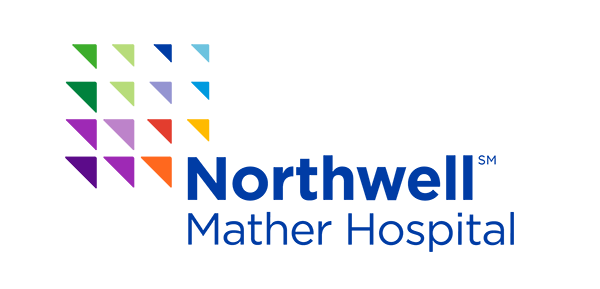By Daphne Baldwin Kornrich, MS, RDN, CSOWM, CDN
Most of us are aware of the important health benefits of exercise and physical activity. These health benefits have been well researched and documented and include reducing risks of developing hypertension, diabetes, osteoporosis, cardiovascular disease, obesity as well as depression and overall mental health. One of the very interesting benefits of exercise and physical activity is how they affect your hormones.
What exactly are hormones?
Hormones are produced and released by the glands in our endocrine system. Hormones communicate with our organs and tissues via our blood stream and are responsible for reproduction, growth, metabolism, digestion, and mood.
Here are a few hormones affected by physical activity and exercise (1):
- Insulin is a hormone that is produced in the pancreas and controls how our body uses and stores blood glucose, which is our body’s primary energy source. When blood sugar is high, insulin is released to help lower blood sugar levels by promoting absorption through the blood stream to skeletal muscles and fat tissue. Exercise has been shown to help those with diabetes by lowering blood glucose levels and Hemoglobin A1c (HbA1c) as well as showing improvement in insulin sensitivity and insulin resistance. Research has also shown that resistance training and aerobic exercise lowers insulin resistance in sedentary older adults at risk for developing diabetes. Including both resistance and aerobic activity in an exercise routine appeared to be more beneficial that doing either one alone (2,3).
- Cortisol is a steroid hormone that is produced by the adrenal glands and helps with the management of blood sugar levels, metabolism, water and sodium balance as well as blood pressure. Cortisol is released when the body experiences stress both mentally and physically. Cortisol is necessary for the rapid breakdown of carbohydrates and fats causing a rise in blood sugar for immediate energy and especially necessary during long durations of exercise. It is important to recover from hard workouts because although cortisol helps with fat metabolism, too much exercise without rest can lead to elevated cortisol levels which can then signal our body to use protein for fuel rather than preserving protein for our muscles (2,4).
- Epinephrine and norepinephrine are released from the adrenal glands and are important in helping our sympathetic nervous system, responsible for our “flight or fight” response, produce energy and help control our body’s functioning during cardiorespiratory exercise. Epinephrine, also known as adrenaline, is responsible for increasing blood sugar for energy and increasing cardiac output along with fat metabolism. Norepinephrine helps constrict blood vessels in parts of the body not involved in exercise in addition to many of the same functions of epinephrine (2,4).
- Testosterone is a steroid hormone produced by the testes in males and is found in small amounts in the ovaries of females. This hormone is responsible for muscle protein growth and repairs muscle damage which can occur during exercise. Testosterone prevents muscle breakdown resulting in an increase in muscle size. Resistance and Hight Intensity Interval Training (HITT) exercises can cause beneficial increases to testosterone levels (2,4,5)
- Human Growth Hormone (HGH) is produced and secreted by the pituitary gland and promotes cellular growth. HGH is produced while we are sleeping during the REM cycle. HGH is responsible for increasing muscle and bone growth and assists with controlling fat metabolism, fluids and sugars and supports our immune system. HGH is stimulated with high intensity strength or cardiorespiratory exercise (2,8).
- Brain-derived Neurotropic Factor (BDNF) is a neurotransmitter that helps stimulate new cells in the brain. The production off BDNF is closely related to HGH. The same exercises that elevate levels of HGH also HGalso increase amounts of BDNF. High intensity exercise can stimulate anabolic hormones for muscle growth while elevating levels of BDNF, which can help improve our cognition (2).
Polycystic Ovary Syndrome (PCOS) is a hormonal disorder, which affects women of childbearing age. Those who have PCOS may produce an abnormal number of androgens (male sex hormones), which can lead to infrequent or prolonged menstrual cycles and may cause excess facial or body hair. Some women experience problems with fertility. The good news is that lifestyle changes, such as increasing exercise, help decrease weight and abdominal fat and improve insulin levels which have been shown to be beneficial in treating PCOS (4,6,7).
Exercises to promote hormone balance:
Yoga and Pilates have been found to help with hormonal balance by helping reduce stress, improving balance and flexibility. One study showed that women who did yoga and light dance for 60 minutes over a period of 12 weeks not only developed better balance and strength but also decreased stress and showed improvement in estrogen levels. Another study found that women who committed to an eight-week Pilates program had a decrease in menopausal symptoms by altering hormones. (4)
Strength training, whether it is lifting weights, using resistance bands, or doing pushups, are beneficial in building our muscles, which increases our metabolism and results in burning more calories. (4)
Hight Intensity Interval Training (HITT) is a workout that includes short spurts of high intense workouts with brief rest periods. HITT has been shown to help increase HGH, insulin resistance, and improving diabetes control and cardiac disease. In addition, HITT may also help with managing high cortisol levels. It’s recommended to add HITT training 20-30 minutes, two-three times a week in addition to our daily physical activity. Doing too much or long durations of HITT can lead to an increase in cortisol and adrenalin levels leading to muscle breakdown and potential injury. (2,4)
Exercise and hormonal responses are a complicated concept. Remember to discuss your exercise program with your physician to ensure that there are no contraindications. Increasing physical activity does not need to be a dreaded chore. The key is to be consistent and find activities that you enjoy. It is fascinating that we all learn how to move before we can talk, because our bodies need to move to stay happy and healthy, hormones and all!
References:
- https://my.clevelandclinic.org/health/articles/21201-endocrine-system
- https://www.acefitness.org/education-and-resources/professional/expert-articles/5593/exercise-and-hormones-8-hormones-involved-in-exercise/
- https://www.health.harvard.edu/staying-healthy/the-importance-of-exercise-when-you-have-diabetes
- https://www.endocrineweb.com/news/the-best-exercise-for-hormonal-imbalance
- https://www.healthline.com/health/does-working-out-increase-testosterone
- https://www.hopkinsmedicine.org/health/conditions-and-diseases/polycystic-ovary-syndrome-pcos#:~:text=Polycystic%20ovary%20syndrome%20(PCOS)%20is,that%20form%20in%20the%20ovaries.
- https://www.healthline.com/health/womens-health/exercise-for-pcos
- https://www.webmd.com/fitness-exercise/human-growth-hormone-hgh#1
Daphne Baldwin Kornrich, MS, RDN, CSOWM, CDN has been a registered dietitian nutritionist for 30 years, working in a wide variety of clinical and outpatient settings. She currently specializes in bariatrics and weight management.

